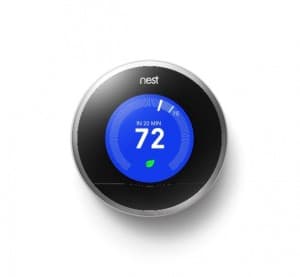Smart Thermostats: Can You Teach an Old Thermostat New Tricks?

It’s no secret in the energy utility world: energy providers are facing many challenges, at the same time that changing technology and the ever-expanding availability of Big Data alter the playing field permanently. As utilities strive to meet aggressive energy savings targets while also strengthening their relationships with customers, many have considered smart thermostat programs for meeting these goals.
Homeowners in North America have already bought into the idea of smart thermostats, literally, with sales more than doubling in 2014 to 3.2 million, according to research from Berg Insight. Consumer motivations for adopting smart thermostat technology range from energy savings to increased comfort.
Despite this consumer enthusiasm, many utilities have been cautious about jumping too quickly into administering smart thermostat programs. This hesitation stems, in large part, from being burned in the past by new thermostat programs that promised much, but underperformed. Programmable thermostats, for instance, which give users the ability to program a schedule of set temperatures, have the potential to reduce energy use from the levels of conventional, manual thermostats, yet many studies show these savings often fail to live up to their promise.
The new generation of Wi-Fi-enabled, smart thermostats designed with schedule-learning features are thought to help eliminate the challenges presented by programmable thermostats by shifting the burden of programming the thermostat from the user to the thermostat. Each of the major thermostat manufacturers have released smart thermostats that can identify opportunities for savings using either occupancy sensing, geofencing, or remote temperature sensing—while also maximizing comfort.
Still, in spite of the advanced technology and popular interest, few comprehensive studies have attempted to quantify these savings in actual customer use thus far. For many utilities, the question remains:
What impact do smart thermostats have on energy savings?
Two of Cadmus’ utility partners in Indiana, Northern Indiana Public Service Company (NIPSCO) and Vectren, set out to answer this question. From 2013-2014, each administered a smart thermostat pilot in their territory. Although several major thermostat manufacturers today, including Honeywell and Ecobee, offer schedule-learning features, the utilities chose the Nest as a representative smart thermostat because it was the only thermostat with built-in occupancy sensing and schedule-learning algorithms at the time. They administered their pilots to a combined total of 1,400 gas and electric customers, making this study the largest of its kind.
Cadmus’ role was to evaluate the energy savings impact of the Nest in the heating and cooling seasons for customers who have gas furnaces and air conditioning. Using participants’ monthly gas and electric bills, Cadmus calculated the energy savings. For the two utilities combined, we found that, on average, Nest thermostats cut gas used for heating by 13.3 percent and electricity used for cooling by 14.5 percent (see Fig. 1). Reports on the individual results for NIPSCO and Vectren were released in January 2015.
Fig. 1 Gas and Electric Savings from Nest Thermostats in Indiana

Another study, conducted by Apex Analytics for the Energy Trust of Oregon (ETO), released in October 2014, showed similar heating energy savings for Nest thermostats. The study assessed the savings on electric resistance backup heat in homes with heat pumps, and found that homes with a Nest thermostat reduced electricity used for heating by 12 percent.
A Range of Benefits
With initial findings showing promise for energy savings with smart thermostats, utilities nationwide are beginning to look at leveraging smart thermostat technology further by pairing them with other energy-efficiency programs. Here are some of the ways utilities are using smart thermostats to provide even more energy savings potential and control options to customers:
Demand Response

Smart thermostats provide a platform for utilities to administer direct load control and behavioral demand response programs that can reduce peak demand. They also have the potential to provide better comfort and greater savings during demand response events. Because smart thermostats collect historical HVAC runtime and time-to-temperature data, they have the potential to optimize the length of pre-cooling events to ensure comfort, while avoiding over-cooling. Cadmus is currently evaluating the impacts of different styles of pre-cooling events implemented with smart thermostats.
Whole-home Energy Monitoring

Smart thermostats can be integrated with smart energy meters to display information about users’ whole-home energy consumption, including historical usage, estimated usage, and estimated bills directly on their thermostat. This information could increase engagement among users and result in energy-efficient behavior beyond the HVAC system.
Home Diagnostics

Smart thermostats collect small-interval data that can be used to diagnose poorly performing HVAC systems or leaky homes. They collect HVAC runtime, indoor temperature, outdoor temperature, setpoints, and system mode—often in intervals as short as one minute. By identifying opportunities for energy-efficiency improvements, smart thermostats could help utilities target energy-efficiency program offerings to the appropriate customers.
Connected Home

Smart thermostats are just one technology among a variety of emerging intelligent devices for the home. When these devices talk to one another, the potential for energy savings is great. Examples of connected devices that could work with smart thermostats include smart window shades, ceiling fans, and lighting. These devices can share information with one another on occupancy, light levels, and current electricity rates to optimize energy usage.
As utilities evaluate the impacts of smart thermostats today, it is important to also consider their potential impacts for tomorrow. These are just some of the possible ways utilities can leverage smart thermostats as tools for energy savings and customer engagement. Given the immediate results on energy bills and future benefits remaining to be realized, giving strong consideration to the new generation of thermostats is, well, just smart.